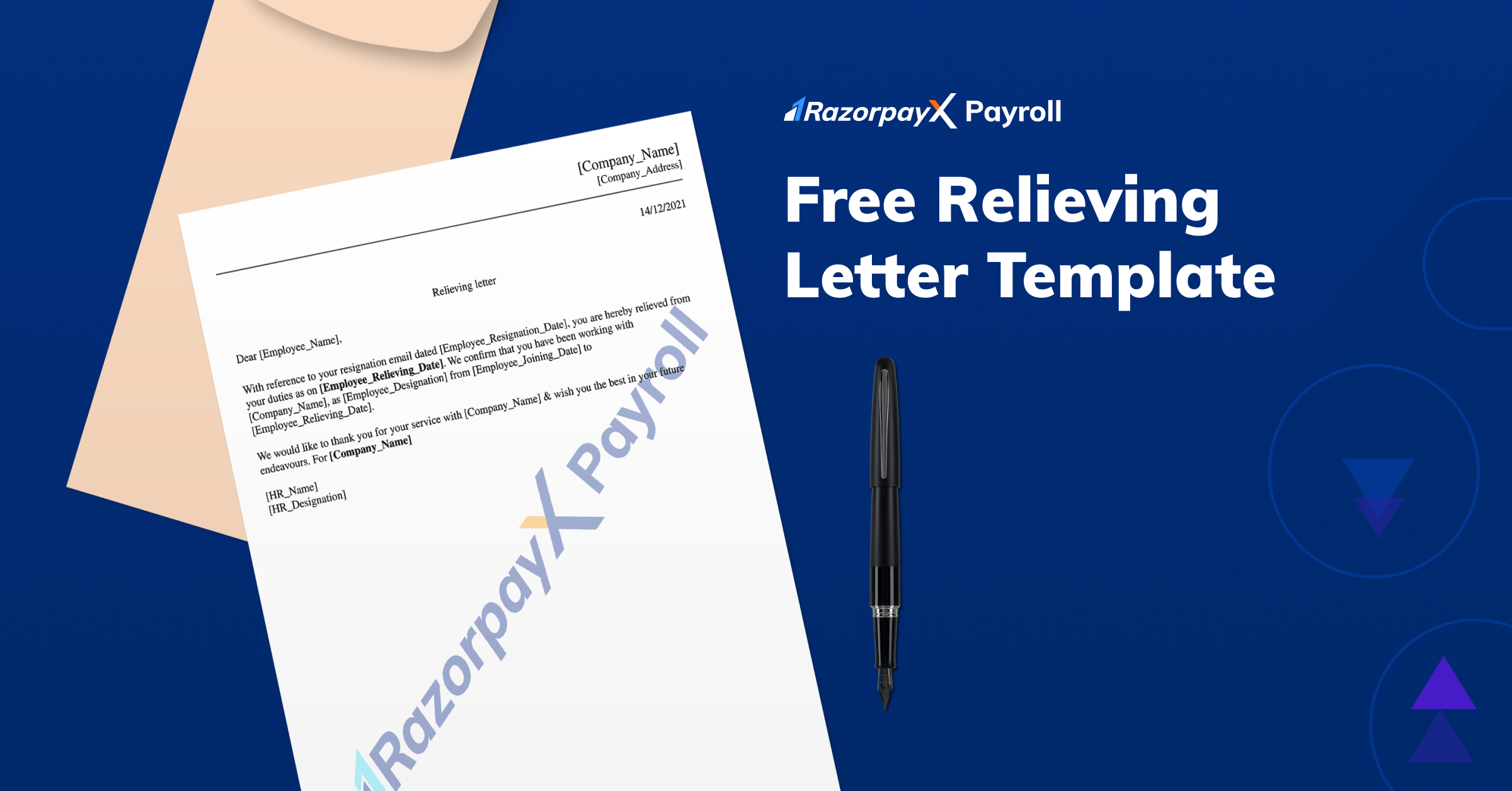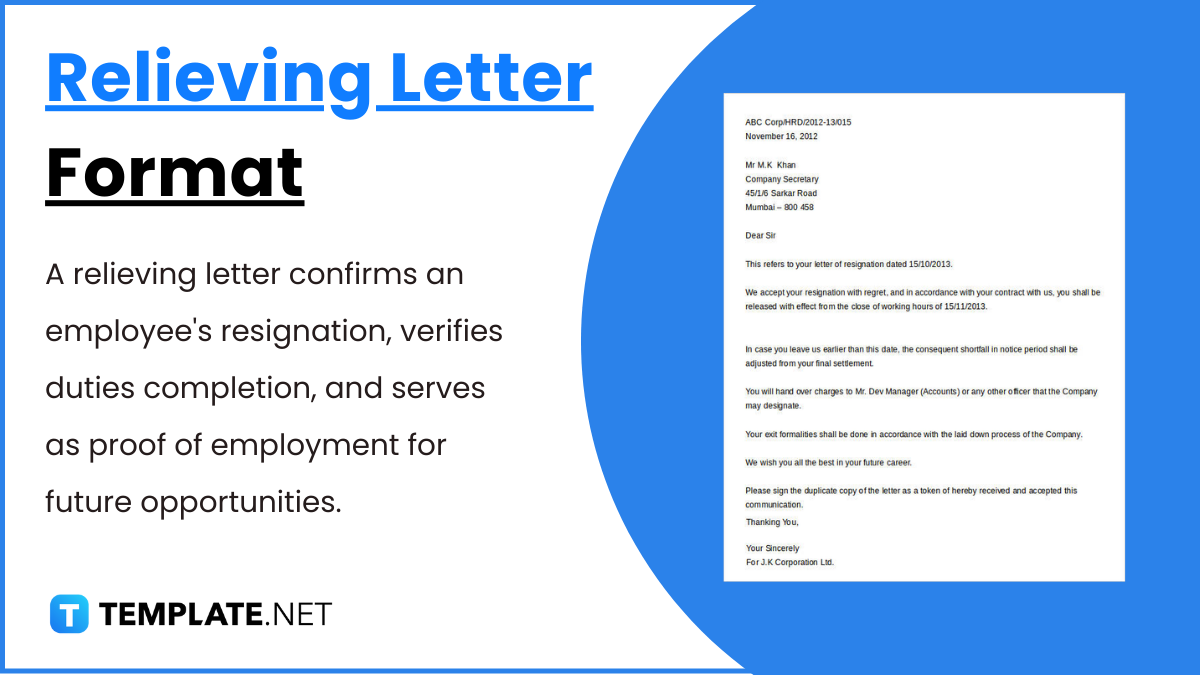Introduction
A relieving letter is a vital document issued by an employer to officially confirm that an employee has resigned from their position and has been formally relieved of all responsibilities. This document serves as an official proof of resignation and is often required when moving to a new job, enrolling in higher education, or even for visa and background verification processes. Without it, transitioning between roles can become challenging, as many organisations insist on receiving this letter before completing your onboarding.
In this comprehensive guide, we’ll explore everything you need to know about a relieving letter—its format, significance, how to properly request one, and the common challenges employees face when obtaining it. Whether you’re a recent graduate, an experienced professional, or an HR personnel, this guide will help you navigate the process with confidence.
What is a Relieving Letter?
A relieving letter is a formal document issued by an employer to acknowledge that an employee has fulfilled all responsibilities and obligations before leaving the company. It typically includes:
Employee’s name and designation
Date of joining and last working day
Confirmation that the employee has been relieved of all duties
A note of appreciation or good conduct (optional)
This document is usually issued on the company’s letterhead and signed by the HR manager or relevant authority
Why is a Relieving Letter Important?
A relieving letter is more than just a piece of paper—it’s an important part of your professional credibility. Here’s why:
-
Proof of Resignation: It confirms you’ve legally and officially resigned from your previous job.
-
Smooth Onboarding in New Job: Many organizations make it mandatory to submit a before joining.
-
Clears Employment History: It validates the tenure and role you held in your previous organisation.
-
Avoid Legal Issues: In regulated industries, not having a may lead to compliance issues.
How to Request a Relieving Letter
If you’re planning to leave your current job, here’s how to ensure you get a relieving letter:
1. Submit a Resignation Letter
Initiate the process by sending a formal resignation letter with a notice period as per your employment contract.
2. Serve the Notice Period
Complete the notice period unless your employer agrees to an early release. Leaving abruptly may affect your chances of receiving a relieving letter.
3. Clear All Dues and Handover
Make sure to complete all pending work, return company property, and clear any financial dues.
4. Follow Up with HR
After your last working day, send a polite email to HR requesting the relieving letter and provide any additional information they may require.
What to Do If You Don’t Get a Relieving Letter

In some cases, employers may delay or deny issuing a relieving letter. Here’s what you can do:
Follow Up Politely: Send reminder emails and request an estimated date for issuance.
Talk to Higher Authorities: If HR doesn’t respond, escalate the matter to senior management.
Legal Notice: If all else fails, consider sending a legal notice or contacting a labor lawyer.
Use an Experience Letter as a Backup: Some companies may accept an experience letter if a s unavailable
Common Mistakes to Avoid
Not Keeping a Copy: Always save a digital and printed copy for your records.
Leaving Without Notice: Abrupt exits can complicate the process.
Not Clarifying Exit Terms: Always understand your resignation policy to avoid confusion later.
Digital Relieving Letters: Are They Acceptable?
With the rise of remote work and digital documentation, many companies now issue in PDF format via email. This is legally valid and widely accepted, provided it includes:
The company’s official letterhead
Signature or e-signature of an authorized person
Clear mention of your employment details and final working date
Always verify the authenticity of digital letters—check for correct formatting, spelling, and official contact information.
1. Can I join a new job without a relieving letter?
You can, but it’s risky. Many HR departments request it during onboarding. Without it, you may face delays or even job offer revocation in strict policy environments.
2. What if my employer refuses to issue a relieving letter?
Try resolving the issue amicably through communication. If unresolved, you can:
Submit email records of your resignation and clearance
Use an experience letter if available
Seek legal advice, especially if the refusal impacts future employment
3. How long does it take to get a relieving letter?
Typically, it takes 7–15 working days after your last day, depending on your company’s HR process. Always ask for a timeline and keep records of your follow-ups.
Is a necessary for internships or part-time jobs?
Not always. It depends on the employer and industry. However, having one can still strengthen your documentation and professional profile.
Final Tips for a Smooth Relieving Letter Process

Maintain Professionalism: Leave on good terms, follow exit protocols, and communicate respectfully.
Document Everything: Keep copies of resignation emails, clearance forms, and HR communication.
Know Your Rights: Employers are obligated to issue this letter if you’ve fulfilled your contractual duties.
Use It Wisely: Attach the letter when applying for new roles or submitting documents for background checks.
Your Career Bridge
A relieving letter acts as a formal bridge between your previous role and the next. It is not just a formality—it’s a professional necessity. Ensuring you receive and safely store this letter can save you from future complications and support your growth journey.
In the fast-paced corporate world, credibility and documentation go hand in hand. Don’t leave without what’s rightfully yours—ask for your relieving letter, verify its contents, and keep it ready for when opportunity knocks.



